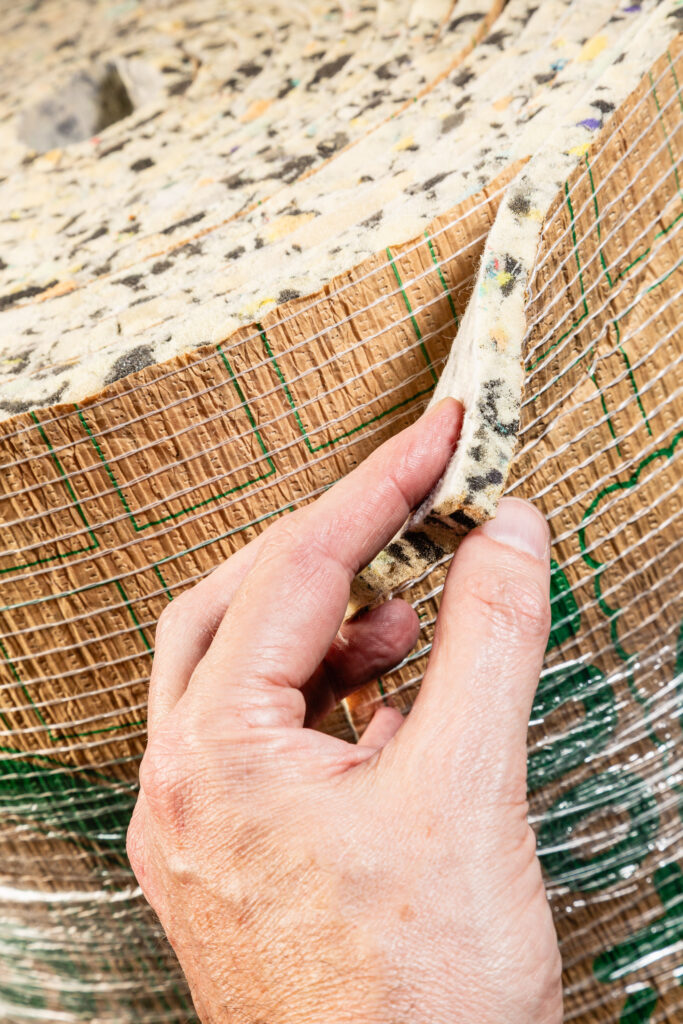Choosing the right underlay is often overlooked when planning carpets and flooring, yet it is one of the most influential decisions for comfort, longevity, and overall aesthetics. In this guide, we’ll explore why underlay matters, how it affects carpets and flooring, and practical tips to help you select the best option for your space. Whether you’re refreshing a bedroom, upgrading a living room, or outfitting a new build, the right underlay can transform your floors.

What an underlay does
An underlay sits between the structural floor and the carpet or final flooring layer. Its role is essential:
- Comfort and feel: A good underlay adds cushioning, making feet sink just enough to feel plush without being spongy.
- Insulation and warmth: It helps retain heat, reducing cold drafts from the floor and improving energy efficiency.
- Sound reduction: Underlays can dampen noise, improving room acoustics and reducing impact sounds in multi-story homes.
- Longevity and wear resistance: A quality underlay provides a stable base that helps carpeting wear more evenly and last longer.
- Flatness and appearance: A smooth, well-supported surface reduces wrinkles, creases, and visible seams in carpets and vinyl.
How underlay interacts with carpets and flooring
Different types of carpets and flooring respond differently to underlay. The combination determines comfort, durability, and performance.
- Carpet underlays: For wall-to-wall carpets, polyurethane foam, felt, or combination underlays offer varying cushioning and density. Higher-density underlays tend to last longer and resist compression, keeping the carpet looking newer for longer.
- Vinyl and luxury vinyl tile (LVT): These floors often benefit from a thin, compliant underlay that counters minor subfloor imperfections, improves comfort underfoot, and supports acoustic performance.
- Laminate and engineered wood: Some laminate or engineered wood products require a dedicated underlay with vapor barriers and moisture protection to prevent swelling and gaps between planks.
- Natural floor coverings: Jute, felt, or rubber underlays may be used with sisal, seagrass, or wool carpets to maintain breathability and temperature balance.
Factors to consider when choosing underlay
Selecting the right underlay depends on several variables. Here are the main considerations:
- Floor type and subfloor condition: Assess whether you have a concrete or timber subfloor, and check for moisture, flatness, and cleanliness. Some substrates need moisture barriers or additional levelling.
- Carpet type and weight: Heavier, thicker carpets benefit from firmer, higher-density underlays, while lighter carpets may be paired with softer options for comfort.
- Room use and foot traffic: High-traffic areas like hallways and stairs benefit from durable, resilient underlays that resist compression and wear.
- Thermal and acoustic requirements: If you want better warmth or sound insulation, choose an underlay with higher insulation values or specific acoustic ratings.
- Moisture and humidity: In damp environments, consider moisture-resistant or breathable underlays to prevent mould and odour development.
- Installation method: Some underlays are easier to install and replace, while others require professional fitting to ensure even support and to avoid folds or ridges.

Materials commonly used for underlays
Understanding the materials helps in matching an underlay to your needs:
- Foam underlays: Lightweight, affordable, and comfortable. They come in various densities and are widely used with both carpets and vinyl.
- Felt underlays: Denser and heavier, offering excellent support and insulation. They can be more durable in high-traffic areas.
- Combination underlays: A mix of foam and felt designed to balance comfort, durability, and acoustic performance.
- Rubber underlays: Durable and resilient, often used in commercial settings, but also suitable for homes where long-term wear is a priority.
- Jute and natural fibre underlays: Eco-friendly options that provide comfortable cushioning while maintaining breathability.
- Acoustic underlays: Specifically engineered to improve sound insulation, often featuring higher density or special laminates.
Practical tips for installation and maintenance
A well-chosen underlay pays off over time, but correct installation is crucial.
- Prepare the subfloor: Ensure it is clean, dry, and free of debris. Address any cracks or irregularities before laying underlay.
- Acclimatise: If possible, leave the underlay in the room for 24 to 48 hours to adjust to the ambient temperature and humidity.
- Fit and trim: Cut carefully to fit room dimensions, allowing for expansion gaps where needed. Align seams with the direction of carpet pile if advised.
- Adhesive and fastening: Some underlays require carpet tape or small staples; others are peel-and-stick or pinned for stability.
- Inspect after fitting: Check for ridges, lumps, or squashed areas and adjust as necessary to maintain a smooth base.
- Regular maintenance: Vacuum regularly and address any area where the underlay shows signs of compression or moisture intrusion.
Common myths about underlay
- “All underlays are the same”: In reality, density, thickness, and material differ greatly, affecting comfort and durability.
- “Thicker is always better”: Not necessarily. The best underlay for your space balances thickness with density and the type of carpet.
- “Underlay is just for warmth”: While warmth is a benefit, underlays also influence sound and wear life.
Cost considerations and value
Investing in a quality underlay can save money in the long run through reduced wear, better insulation, and improved acoustics. When budgeting, consider the long-term benefits rather than only upfront price. It’s worth comparing warranties, installation requirements, and compatibility with carpets and flooring to maximise value.
Final thoughts
The right underlay can dramatically enhance your carpets and flooring, delivering comfort, warmth, and longevity. By understanding how underlay interacts with your chosen floor coverings, assessing the space, and selecting the appropriate material, you ensure a finished result that looks better, lasts longer, and feels better underfoot. In short, when it comes to carpets and flooring, underlay matters. It’s the unsung hero that supports every step you take.

